Mapping the Distribution of Summer Precipitation Types over China Based on Radar Observations
Abstract
:1. Introduction
2. Materials and Methods
2.1. Radar Data
2.2. EAR5-Land
2.3. Precipitation Classification
3. Results
3.1. Summer Variations
3.2. Monthly Variations
3.3. Diurnal Variations
4. Conclusions
Author Contributions
Funding
Data Availability Statement
Acknowledgments
Conflicts of Interest
References
- Yu, R.; Li, J.; Chen, H.; Yuan, W. Progress in Studies of the Precipitation Diurnal Variation over Contiguous China. J. Meteor. Res. 2014, 28, 877–902. [Google Scholar] [CrossRef]
- Chen, S.; Tian, Y.; Behrangi, A.; Hu, J.; Hong, Y.; Zhang, Z.; Stepanian, P.M.; Hu, B.; Zhang, X. Precipitation Spectra Analysis Over China with High-Resolution Measurements from Optimally Merged Satellite/Gauge Observations—Part I: Spatial and Seasonal Analysis. IEEE J. Sel Top. Appl Earth Obs Remote Sens. 2016, 9, 2966–2978. [Google Scholar] [CrossRef]
- Liu, P.; Li, C.; Wang, Y.; Fu, Y. Climatic characteristics of convective and stratiform precipitation over the Tropical and Subtropical areas as derived from TRMM PR. Sci. China Earth Sci. 2012, 56, 375–385. [Google Scholar] [CrossRef]
- Varma, A.K.; Liu, G. On classifying rain types using satellite microwave observations. J. Geophys. Res. 2010, 115, 204. [Google Scholar] [CrossRef]
- Chen, S.; Zhang, J.; Mullens, E.; Hong, Y.; Behrangi, A.; Tian, Y.; Hu, X.M.; Hu, J.; Zhang, Z.; Zhang, X. Mapping the Precipitation Type Distribution Over the Contiguous United States Using NOAA/NSSL National Multi-Sensor Mosaic QPE. IEEE Trans. Geosci. Remote Sens. 2015, 53, 4434–4443. [Google Scholar] [CrossRef]
- Zhang, J.; Howard, K.; Langston, C.; Vasiloff, S.; Kaney, B.; Arthur, A.; Van Cooten, S.; Kelleher, K.; Kitzmiller, D.; Ding, F. National Mosaic and Multi-Sensor QPE (NMQ) System: Description, Results, and Future Plans. Bull. Amer Meteor. Soc. 2011, 92, 1321–1338. [Google Scholar] [CrossRef] [Green Version]
- Chen, G.; Sha, W.; Iwasaki, T. Diurnal variation of precipitation over southeastern China: Spatial distribution and its seasonality. J. Geophys Res. 2009, 114, D13. [Google Scholar] [CrossRef] [Green Version]
- Chen, S.; Behrangi, A.; Tian, Y.; Hu, J.; Hong, Y.; Tang, Q.; Hu, X.; Stepanian, P.M.; Hu, B.; Zhang, X. Precipitation Spectra Analysis Over China with High-Resolution Measurements from Optimally-Merged Satellite/Gauge Observations—Part II: Diurnal Variability Analysis. IEEE J. Sel Top. Appl Earth Obs Remote Sens. 2016, 9, 2979–2988. [Google Scholar] [CrossRef]
- Ding, Y.; Chan, J. The East Asian summer monsoon: An overview. Meteor. Atmos Phys. 2005, 89, 117–142. [Google Scholar] [CrossRef]
- Chen, X.; Zhao, K.; Xue, M. Spatial and temporal characteristics of warm season convection over Pearl River Delta region, China, based on 3 years of operational radar data. J. Geophys Res. 2015, 119, 12447–12465. [Google Scholar] [CrossRef]
- Luo, Y.; Wang, H.; Zhang, R.; Qian, W.; Luo, Z. Comparison of Rainfall Characteristics and Convective Properties of Monsoon Precipitation Systems over South China and the Yangtze and Huai River Basin. J. Climate. 2013, 26, 110–132. [Google Scholar] [CrossRef] [Green Version]
- Yuan, W.; Yu, R.; Fu, Y. Study of Different Diurnal Variations of Summer Long-Duration Rainfall Between the Southern and Northern Parts of the Huai River. Chin. J. Geophys. 2014, 57, 145–153. [Google Scholar]
- Chen, S.; Kirstetter, P.; Hong, Y.; Gourley, J.; Xue, X. Evaluation of Spatial Errors of Precipitation Rates and Types from TRMM Spaceborne Radar over the Southern CONUS. J. Hydrometeorol. 2013, 14, 1884–1896. [Google Scholar] [CrossRef] [Green Version]
- Chen, S.; Hong, Y.; Behrangi, A.; Qi, Y.; Hu, J. Performance and Uncertainty Analysis of Precipitation Retrievals Derived from Dual-frequency Precipitation Radar and Microwave Imager onboard GPM over CONUS. In Proceedings of the AGU Fall Meeting Abstracts, Norman, OK, USA, 1 December 2014. [Google Scholar]
- Kong, Y. Evaluation of the Accuracy of GPM/IMERG over the Mainland of the China; Nanjing University of Information Science & Technology: Nanjing, China, 2017. [Google Scholar]
- Liu, P.; Fu, Y.; Feng, S.; Cao, A.; Yang, Y.; Li, T. A comparison of the precipitation from rain gauge observations with from TRMM PR measurements in the southern China. Acta Meteor. Sin. 2010, 68, 822–835. [Google Scholar]
- Min, C.; Chen, S.; Gourley, J.; Chen, H.; Zhang, A.; Huang, Y.; Huang, C. Coverage of China New Generation Weather Radar Network. Adv. Meteor. 2019, 2019, 5789358. [Google Scholar] [CrossRef]
- Bai, L.; Chen, G.; Huang, L. Image Processing of Radar Mosaics for the Climatology of Convection Initiation in South China. J. Appl Meteor. Climatol. 2020, 59, 65–81. [Google Scholar] [CrossRef]
- Bai, L.; Chen, G.; Huang, L. Convection initiation in monsoon coastal areas (South China). Geophys Res. Lett. 2020, 47, e2020GL087035. [Google Scholar] [CrossRef]
- Fulton, R.; Breidenbach, J.; Seo, D.; Miller, D.; O’Bannon, T. The WSR-88D Rainfall Algorithm. Wea. Forecasting. 1998, 13, 377–395. [Google Scholar] [CrossRef]
- Chen, M.; Wang, Y.; Gao, F.; Xiao, X. Diurnal variations in convective storm activity over contiguous North China during the warm season based on radar mosaic climatology. J. Geophys. Res. 2012, 117, D20115. [Google Scholar] [CrossRef] [Green Version]
- Chen, X.; Zhao, K.; Xue, M.; Zhou, B.; Huang, X.; Xu, W. Radar-observed diurnal cycle and propagation of convection over the Pearl River Delta during Mei-Yu season. J. Geophys. Res. Atmos. 2015, 120, 12557–12575. [Google Scholar] [CrossRef] [Green Version]
- Rickenbach, T.; Rutledge, S. Convection in TOGA COARE: Horizontal scale, morphology and rainfall production. J. Atmos Sci. 1998, 55, 2715. [Google Scholar] [CrossRef] [Green Version]
- Steiner, M.; Houze, R.; Yuter, S. Climatological Characterization of Three-Dimensional Storm Structure from Operational Radar and Rain Gauge Data. J. Appl Meteor. Climatol. 1995, 34, 1978–2007. [Google Scholar] [CrossRef]
- Wilson, J.; Roberts, R. Summary of Convective Storm Initiation and Evolution during IHOP: Observational and Modeling Perspective. Mon. Wea Rev. 2006, 134, 23–47. [Google Scholar] [CrossRef]
- Chen, S.; Hong, Y.; Cao, Q.; Gourley, J.; Kirstetter, P.; Yong, B.; Tian, Y.; Zhang, Z.; Shen, Y.; Hu, J. Similarity and difference of the two successive V6 and V7 TRMM multisatellite precipitation analysis performance over China. J. Geophys. Res. Atmos. 2013, 118, 13060–13074. [Google Scholar] [CrossRef]
- Zhou, T.; Yu, R. Atmospheric water vapor transport associated with typical anomalous summer rainfall patterns in China. J. Geophys Res. 2005, 110, D08104. [Google Scholar] [CrossRef] [Green Version]
- Wang, B.; Lin, H. Rainy Season of the Asian–Pacific Summer Monsoon. J. Clim. 2002, 15, 386–398. [Google Scholar] [CrossRef] [Green Version]
- Haberlie, A.; Ashley, W.; Pingel, T. The effect of urbanisation on the climatology of thunderstorm initiation. Q. J. R. Meteorol. Soc. 2015, 141, 663–675. [Google Scholar] [CrossRef]
- Zhuo, H.; Zhao, P.; Zhou, T. Diurnal cycle of summer rainfall in Shandong of eastern China. J. Climatol. 2014, 34, 742–750. [Google Scholar] [CrossRef]
- Shen, Y.; Zhao, P.; Pan, Y.; Yu, J. A high spatiotemporal gauge-satellite merged precipitation analysis over China. J. Geophys. Res. Atmos. 2014, 119, 3063–3075. [Google Scholar] [CrossRef]
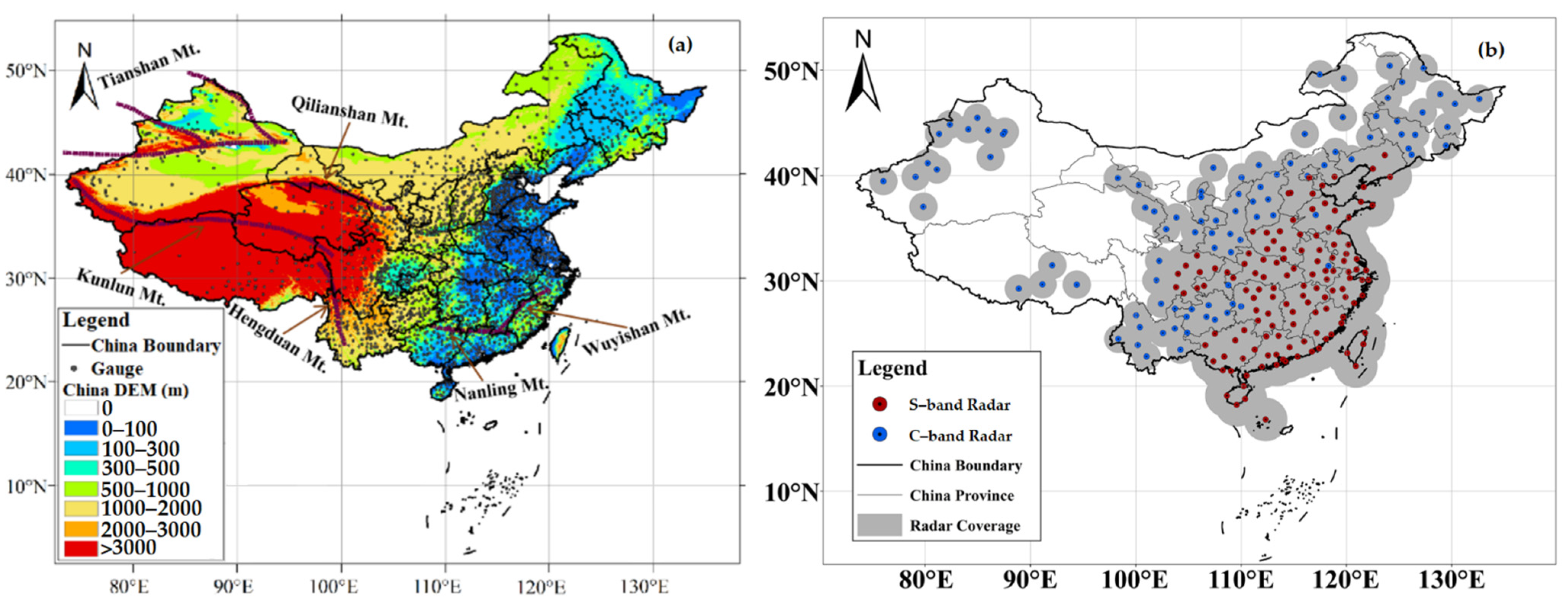
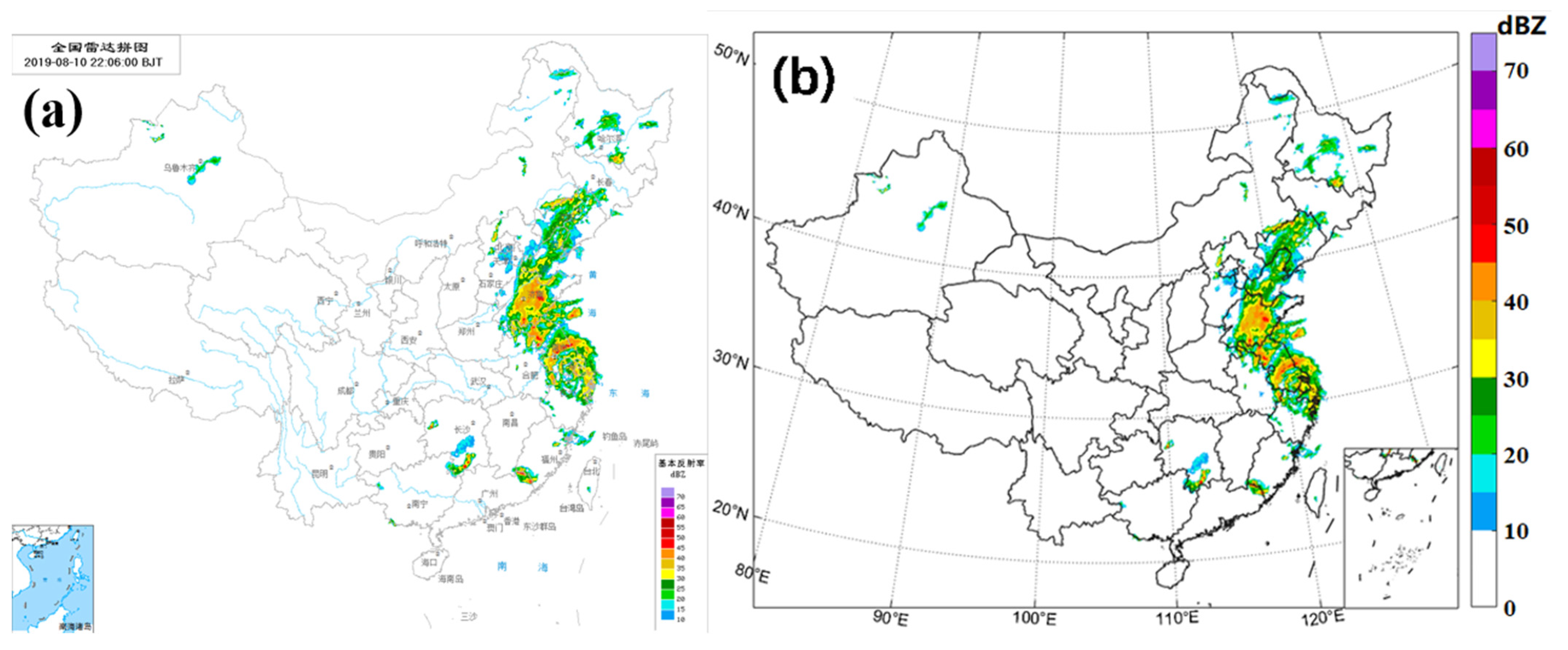
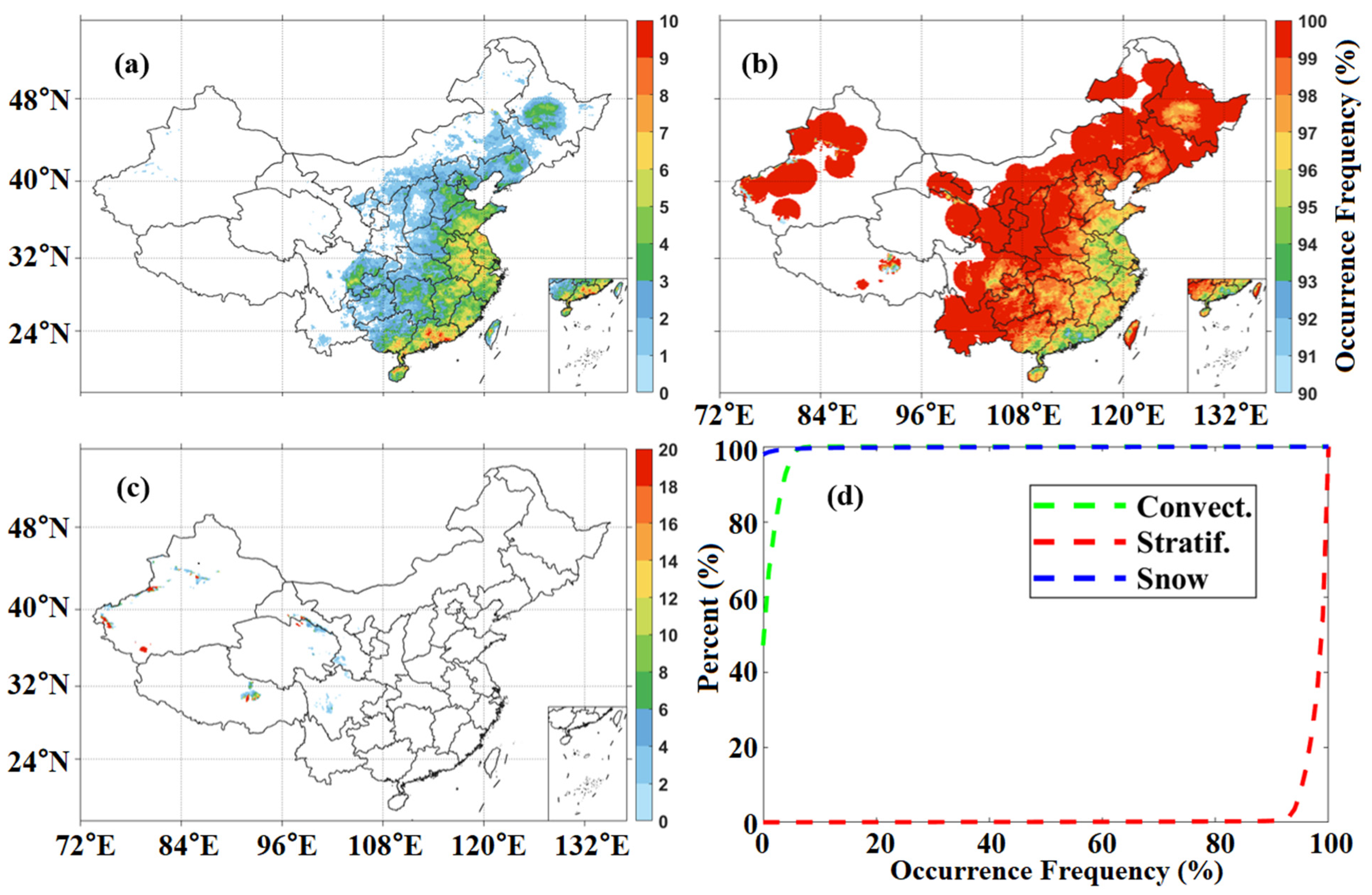
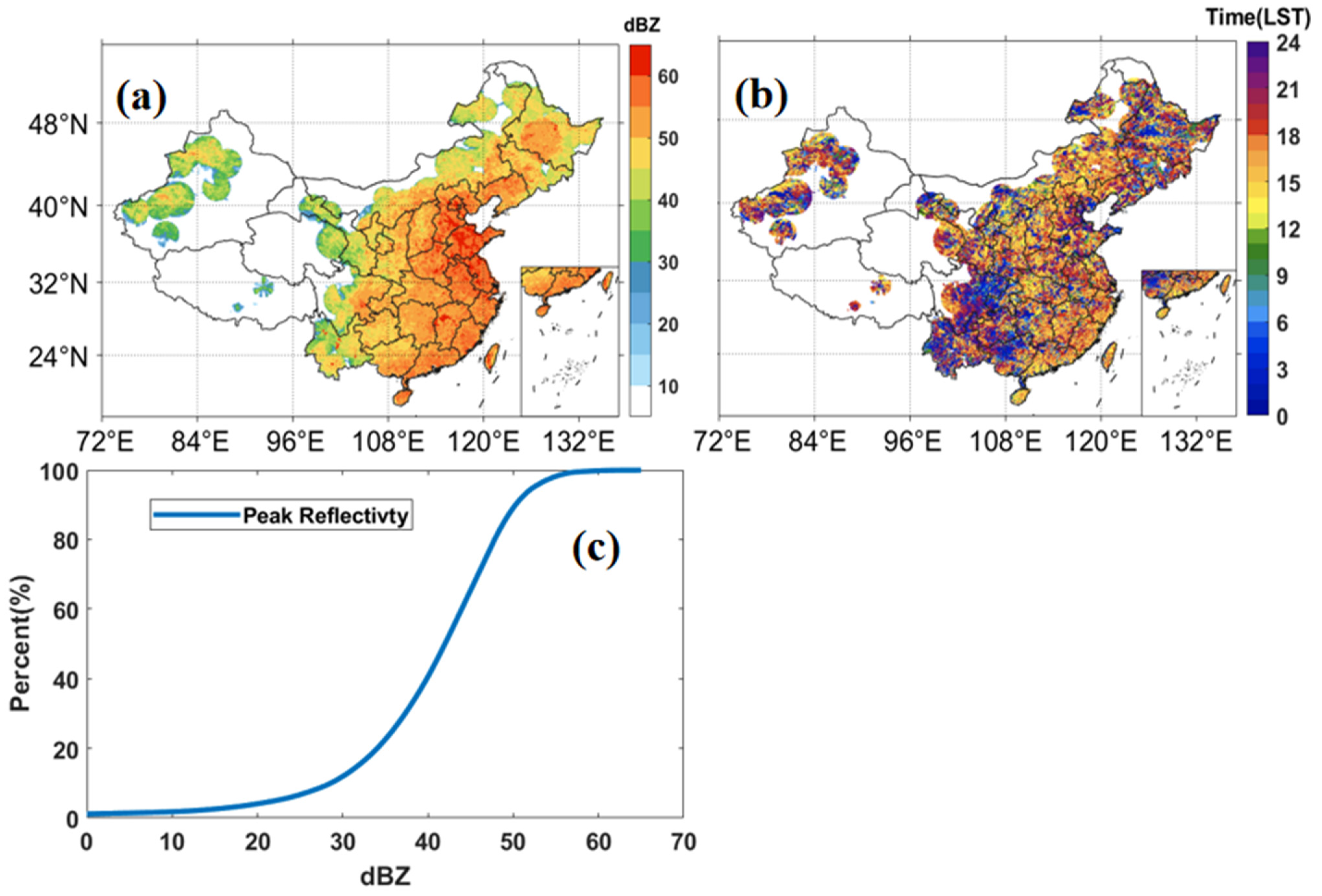
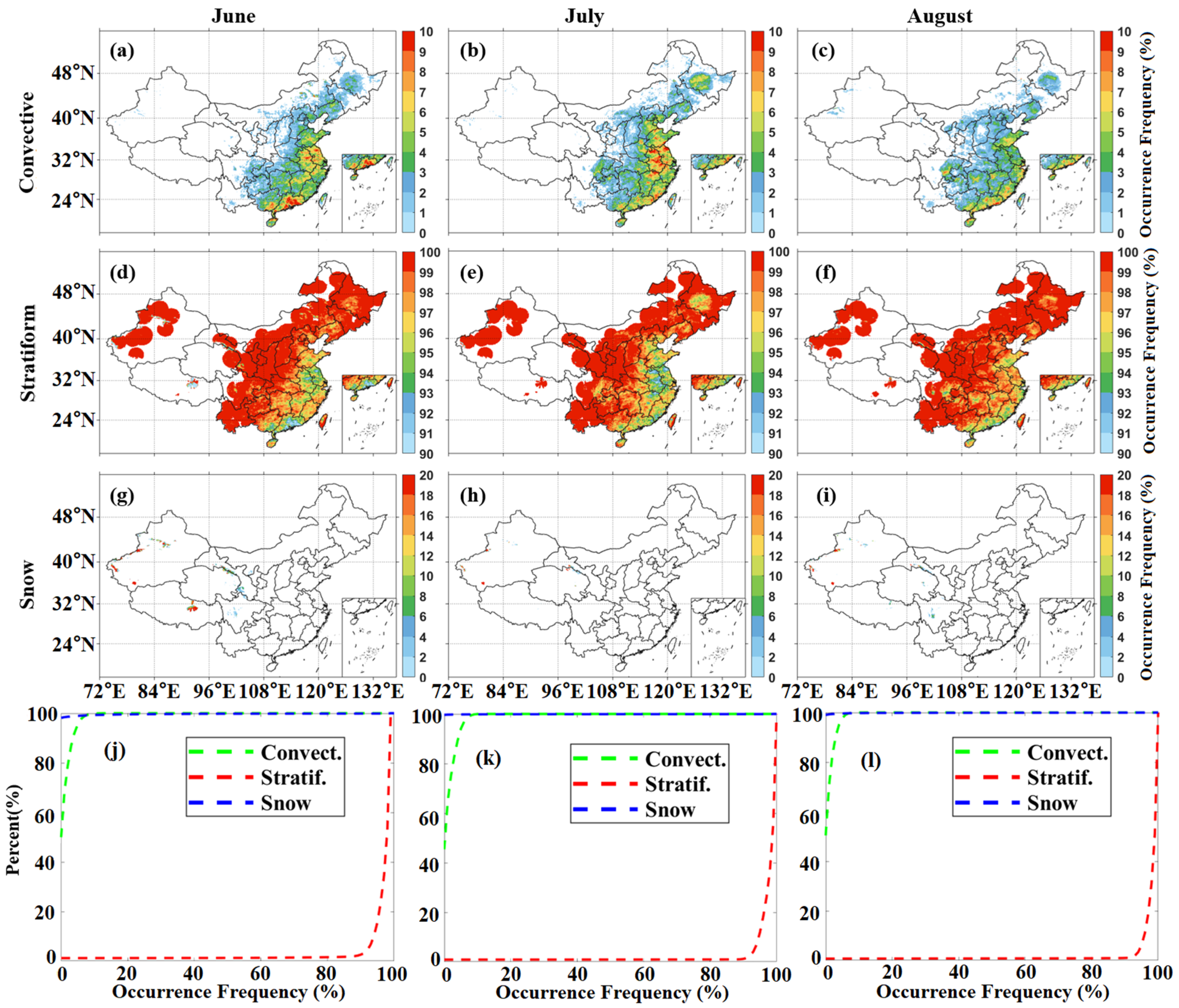
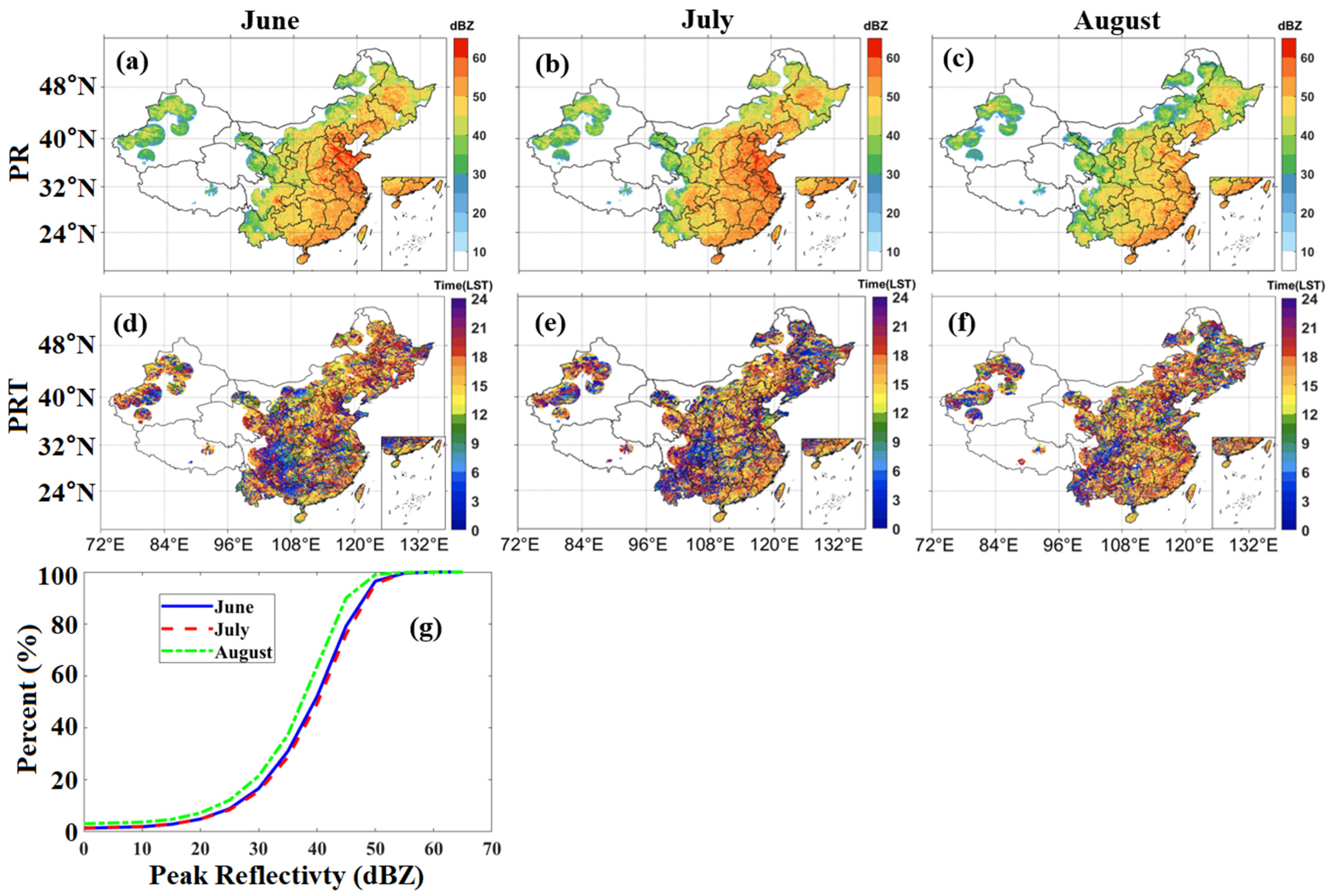

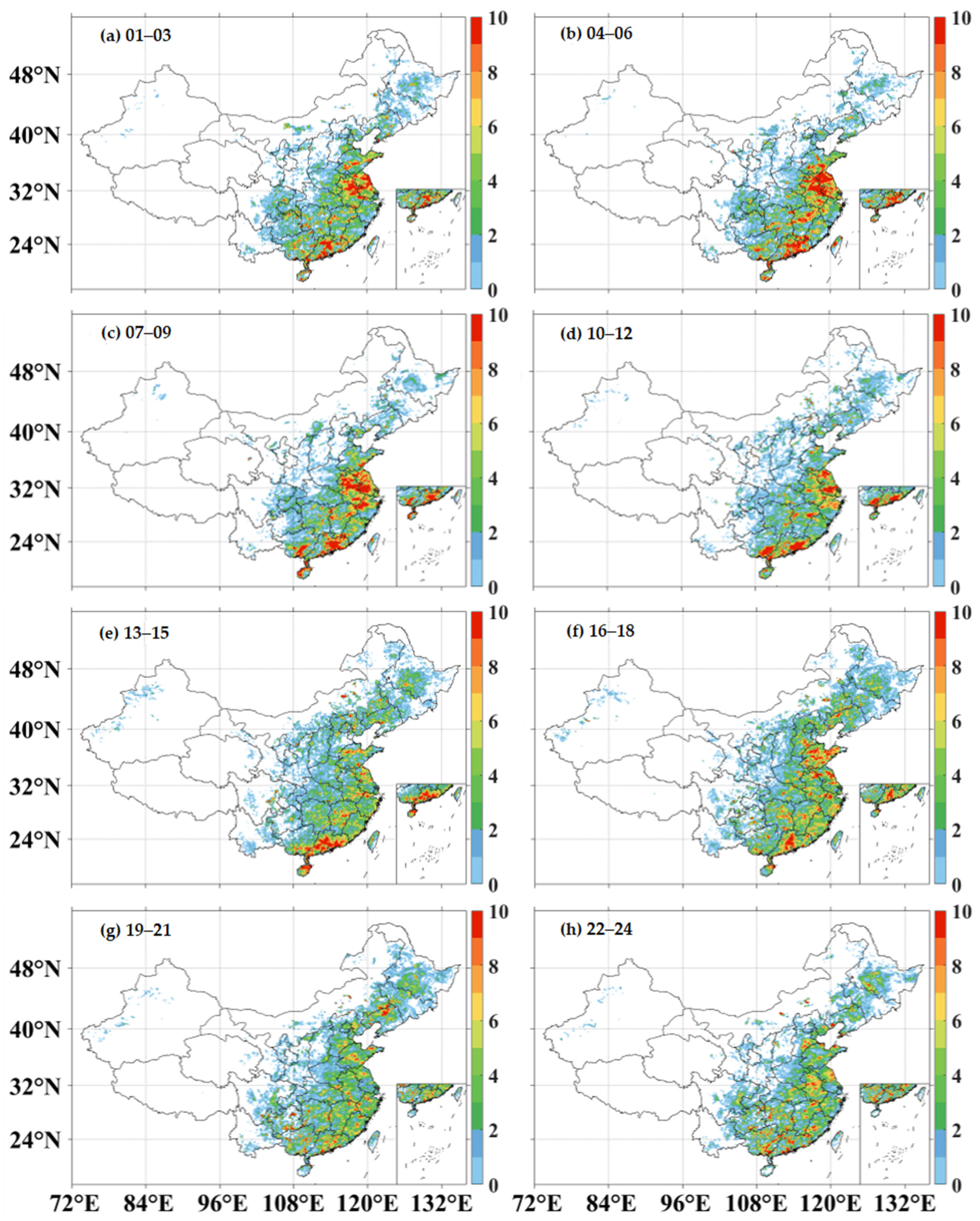

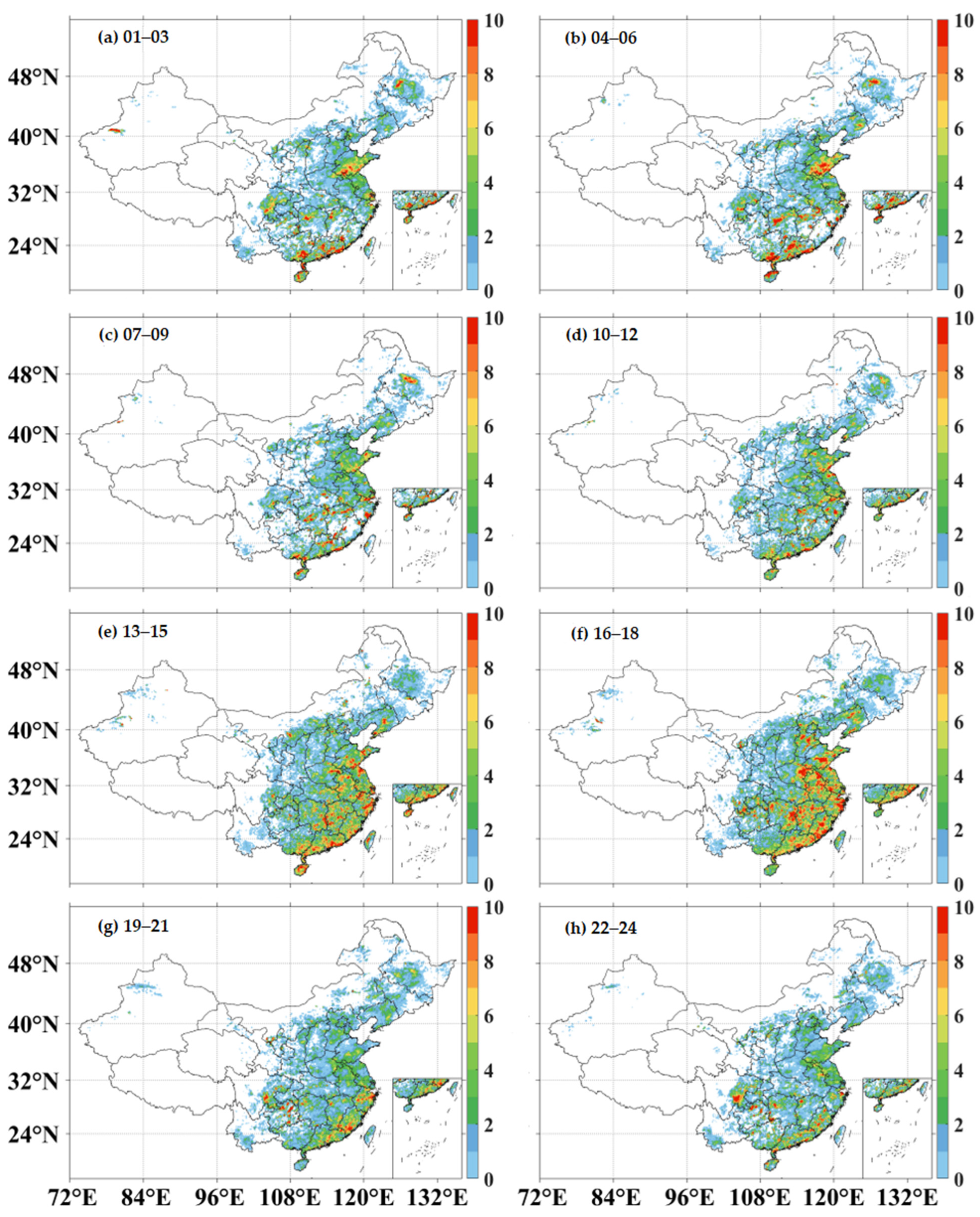
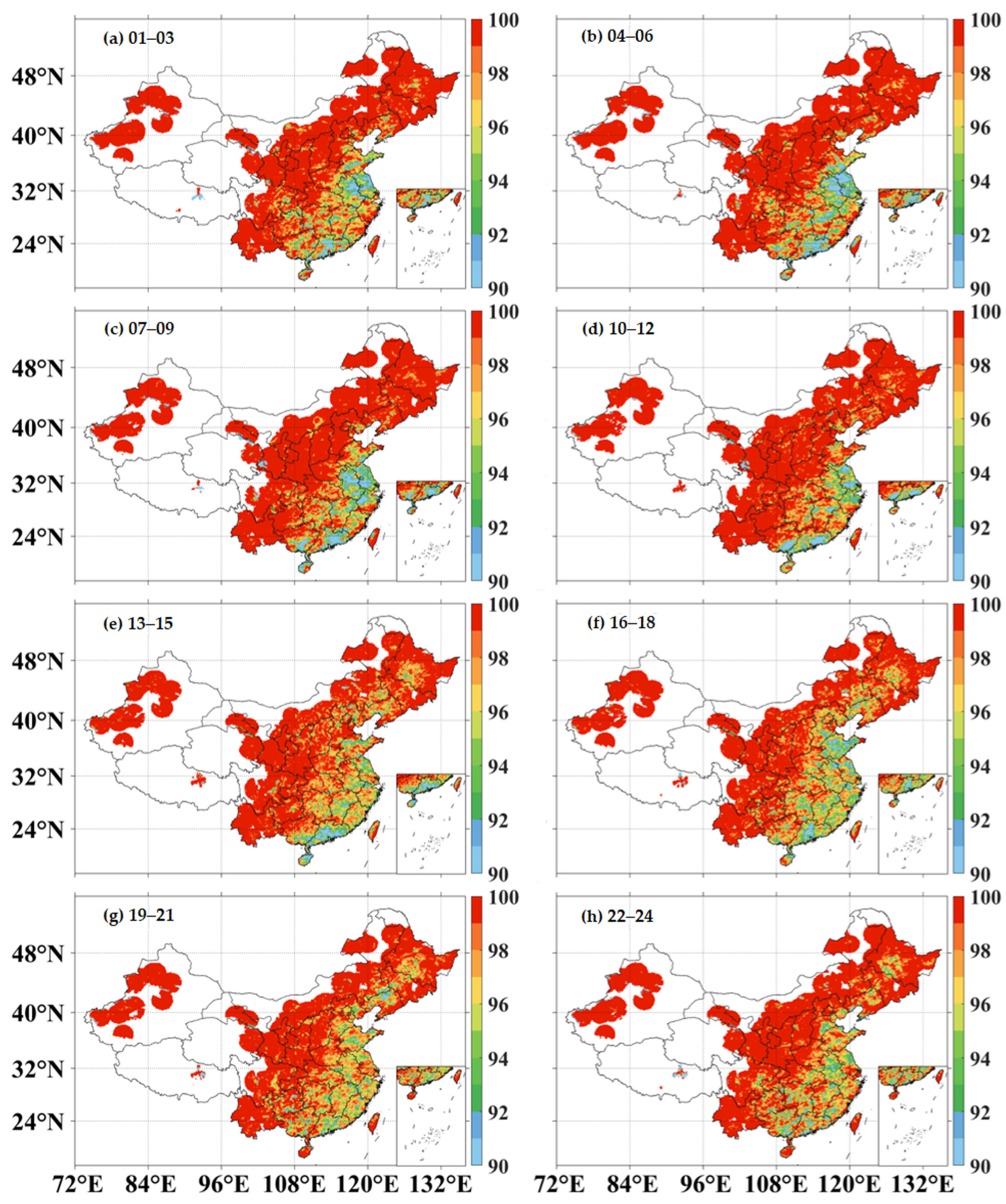
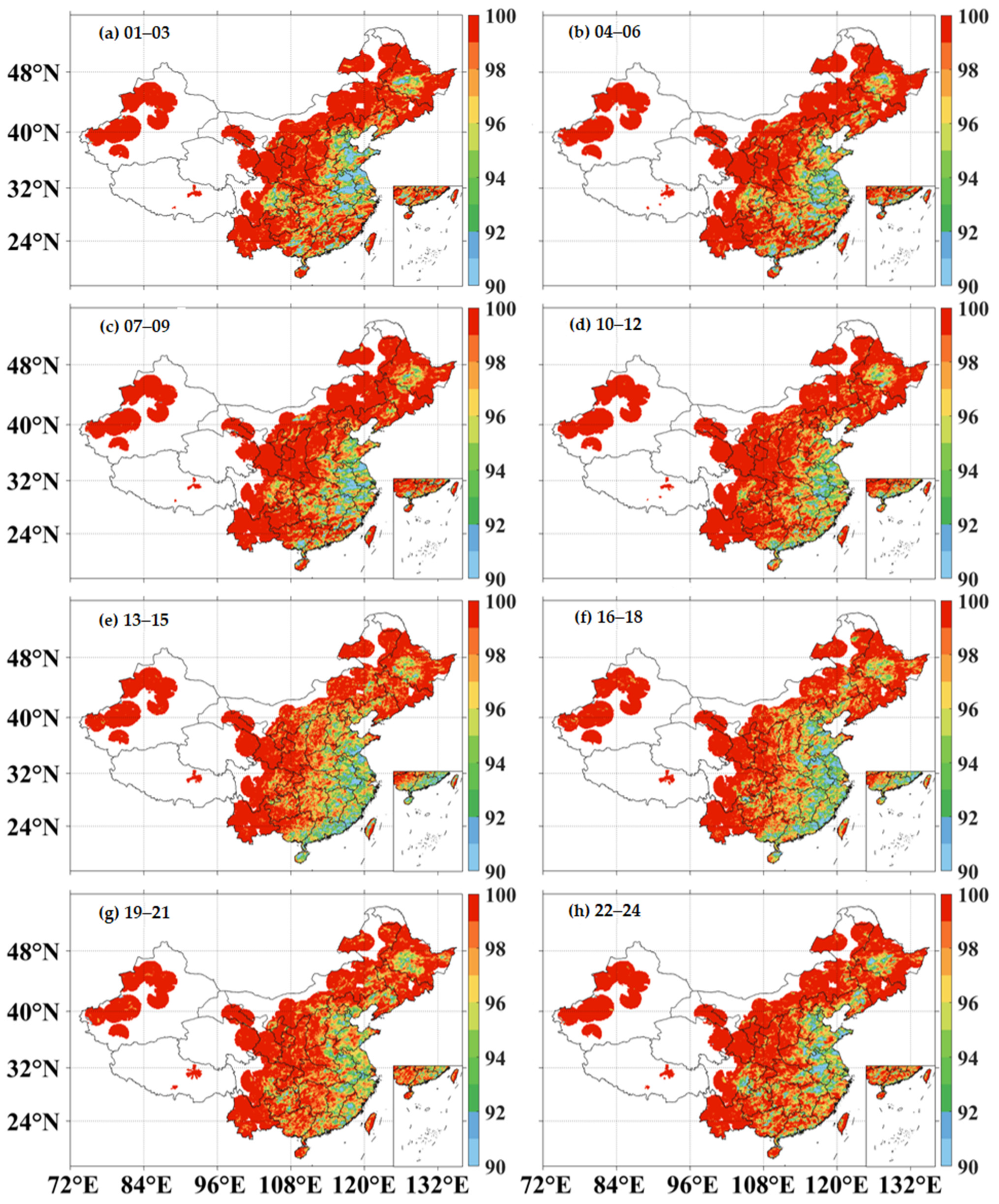
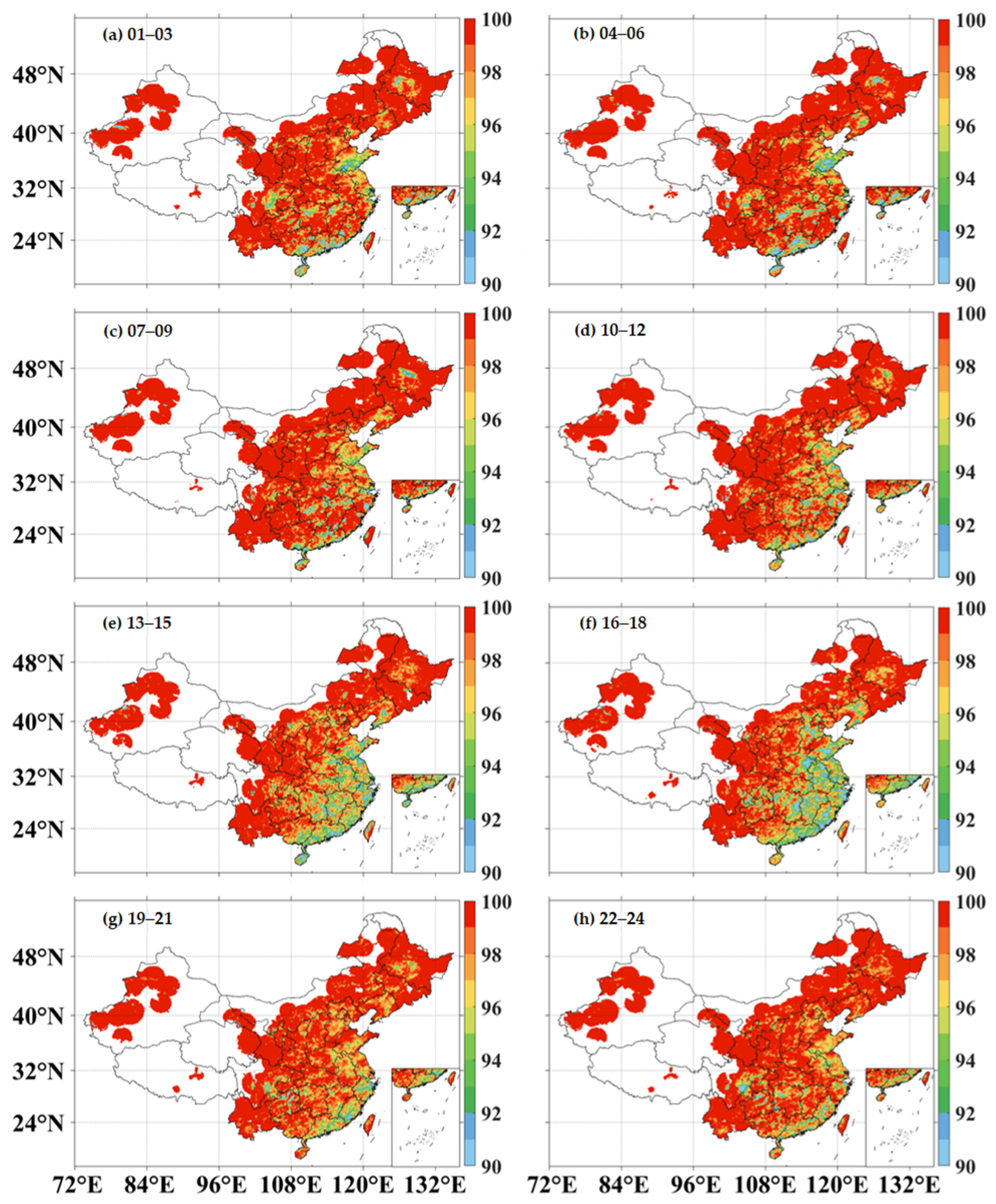


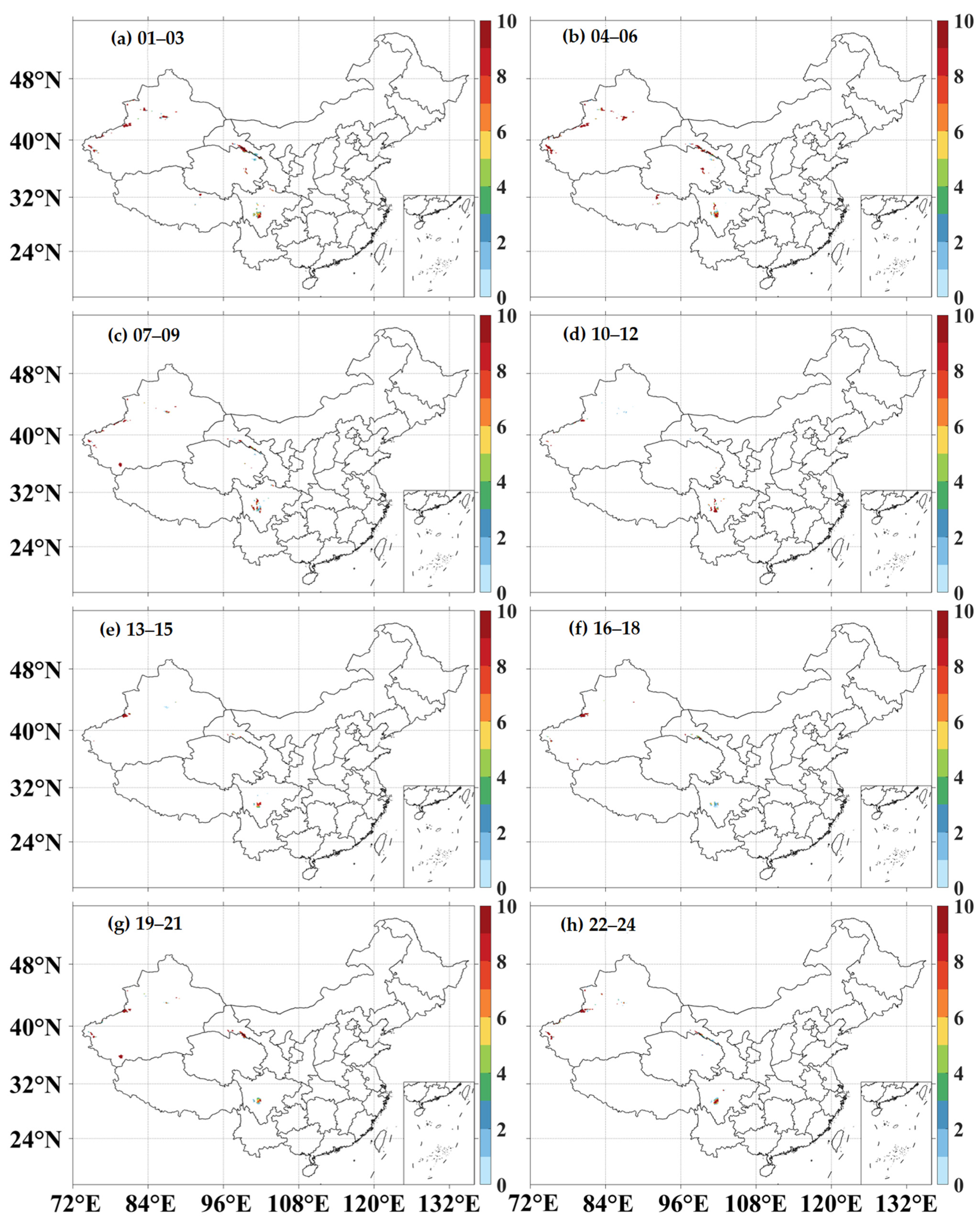
Publisher’s Note: MDPI stays neutral with regard to jurisdictional claims in published maps and institutional affiliations. |
© 2022 by the authors. Licensee MDPI, Basel, Switzerland. This article is an open access article distributed under the terms and conditions of the Creative Commons Attribution (CC BY) license (https://creativecommons.org/licenses/by/4.0/).
Share and Cite
Tang, J.; Chen, S.; Li, Z.; Gao, L. Mapping the Distribution of Summer Precipitation Types over China Based on Radar Observations. Remote Sens. 2022, 14, 3437. https://doi.org/10.3390/rs14143437
Tang J, Chen S, Li Z, Gao L. Mapping the Distribution of Summer Precipitation Types over China Based on Radar Observations. Remote Sensing. 2022; 14(14):3437. https://doi.org/10.3390/rs14143437
Chicago/Turabian StyleTang, Jing, Sheng Chen, Zhi Li, and Liang Gao. 2022. "Mapping the Distribution of Summer Precipitation Types over China Based on Radar Observations" Remote Sensing 14, no. 14: 3437. https://doi.org/10.3390/rs14143437
APA StyleTang, J., Chen, S., Li, Z., & Gao, L. (2022). Mapping the Distribution of Summer Precipitation Types over China Based on Radar Observations. Remote Sensing, 14(14), 3437. https://doi.org/10.3390/rs14143437







